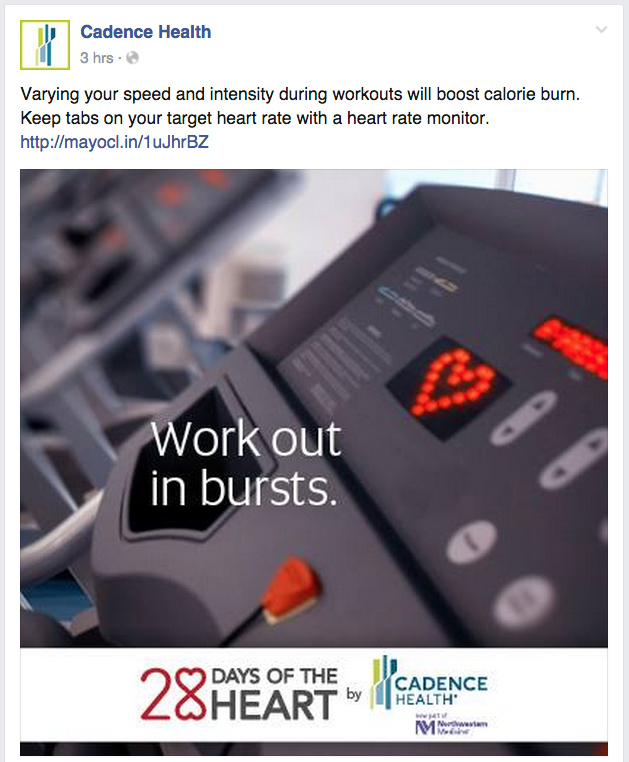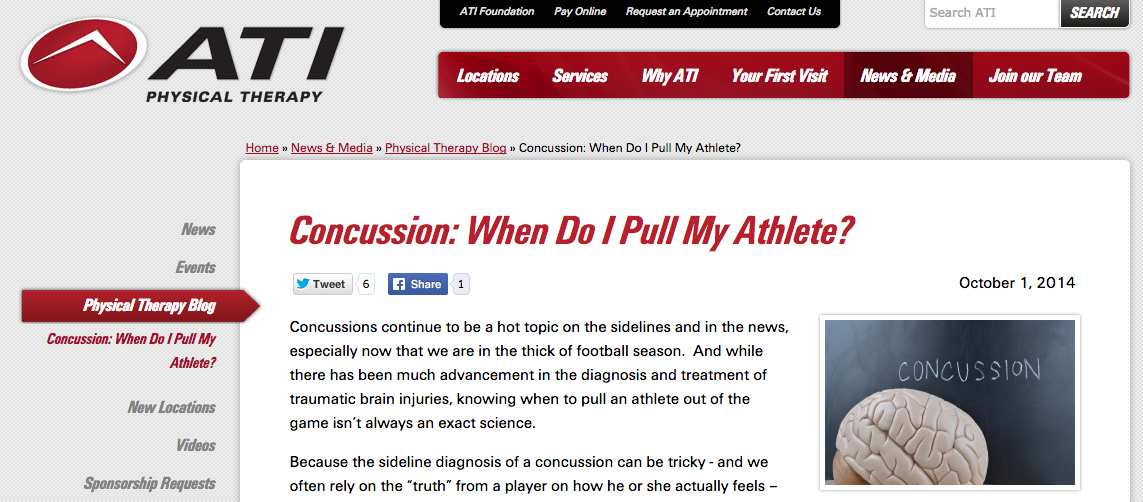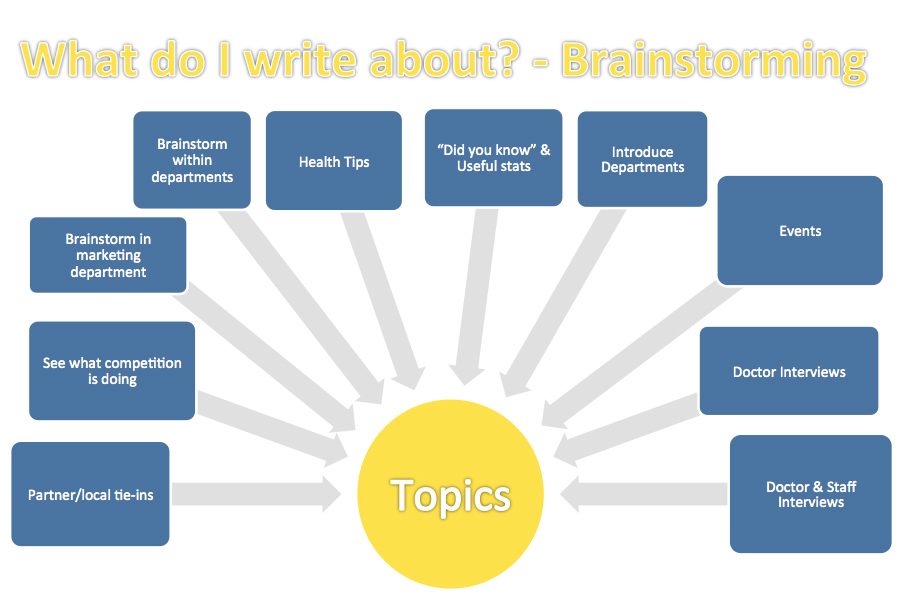As a healthcare marketing professional, you’ve heard all about content by now:
“Content is king”
“Content marketing is the new SEO”
But what exactly is Content Marketing?
Simply defined, Content Marketing is use of content (articles, images or any other deliverable) to increase brand awareness. It’s a digital age “touch point.”
This content is ideally produced by you, and lives on your website. However, many healthcare organizations will also leverage content produced outside, whether from publications, medical journals or general interest websites. Readers want to be informed, and appreciate that you lead them to useful content no matter the source.
Without this valuable content, your organization is a self-promoting machine, and public interest will be flat. Give them tips, shortcuts, facts – something valuable. Don’t just tell them what you do and what accolades your doctors have received.
Let’s look at a couple of examples.
First, here’s a recent post from Cadence Health in the Chicago suburbs. But note, the content is from Mayo Clinic:

And here’s a blog post from ATI Physical Therapy regarding concussions in sports, a hot topic to talk about:

Here, they wrote their own content and then posted links to it on various social media outlets to get more eyes on their website. Bonus traffic. Extra awareness. Possibly shares on social media for even more exposure. A great plan. This is content marketing working well.
Developing Content Topic Ideas
For healthcare marketers, it can be difficult to come up with topics for content marketing campaigns. There are so many possibilities – so many service lines and doctors to promote. Plus, there is a struggle to be different, and not just put out messaging of whatever “awareness month” is upon us.
First, decide on a goal. Three are typical:
Goal 1: Improving Google rankings
Strategy: Choose keywords and departments that need help with rankings
Example: Physical Therapy department features X technology
Goal 2: Patient Acquisition
Strategy: Think like a consumer. What would they read and share?
Example: Physical therapy department is covered by Blue Cross Blue Shield, and has free guest pass
Goal 3: Brand Awareness
Strategy: Focus on public events and think regionally.
Example: We will be at the local pharmacy offering flu shots
Time to Brainstorm
In a busy marketing department, taking time out for an idea session might be unheard of. But it can be a fun break for your team. Below is a sample of opportunities that can get the ball rolling. Each of these ideas can generate dozens more, either by putting them into action (doctor interviews could cover several doctors) or letting each of these branch off into further ideas.

At jSinger, we think there are solid ideas for any goals you may have. We love doing these brainstorm sessions, in person, or even by phone or e-mail.
Once you’ve got a goal and topics, it’s time to execute. You need to write and then push the messages out to the proper channels.
Conveying Your Marketing Message
Now that you are full of content marketing ideas that support your healthcare marketing goals, the question is where to post your content.
The good news is that you have plenty of outlets to push out the same content. This saves you time by leveraging the same content, but also is wise because it creates a unified message across multiple channels.
- Website: First, be sure to post your content to your website as either a blog post, a web page, or a news story. The exact format does not matter as long as it is a stand-alone link on your website. Posting on your website first establishes your website as the originator of the content. It also is the place that your other outlets should point to. This earns traffic for your website, and backlinks which boost your website’s search engine rankings over time.
- Social Media: Next, you should post your content on your social media channels like Facebook, Twitter and Linked In. This is also the best place for others to share your content, reaching an audience you never would have reached on your own.
- Partners: Next, consider your partners and staff. Can you doctors share or re-post your articles? How about your staff?
- Other Relationships: Then, think further about your relationships. Would a local partner, vendor, mall or school benefit from your content? If so, make sure to send your content their way. They may share on social media or even post on their website.
- Emails: Finally, if you do marketing e-mails, direct mail or other cross promotions, be sure to include your original content in those outlets as well.
If done consistently and properly, the result should be a predictable bump in website traffic on days that you publish new content. Social sharing and references through the webs should increase as well.
The consistency cannot be stated enough. Your relationships on the web require trust.
Writing your first few content pieces is just a drip in the water. Once you are an established source of content (think six months to a year), your content will start gaining credibility. Focus on your audience. Write to help them, not just to promote yourself.
